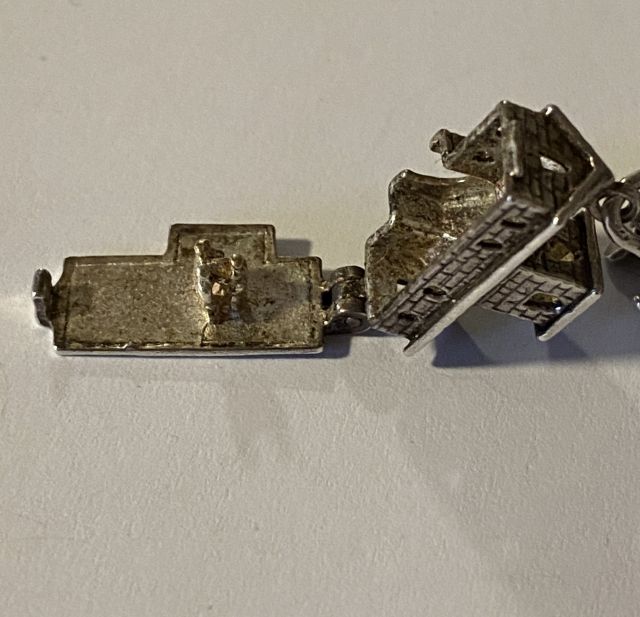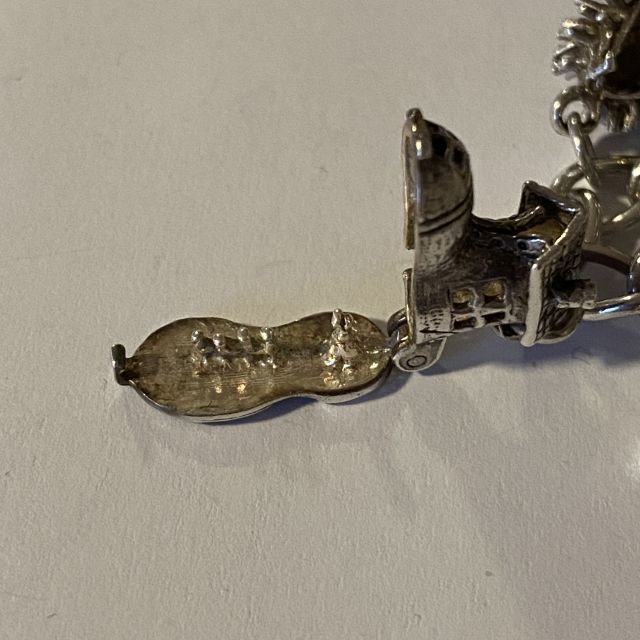#feministfriday episode 281 | Spiney Norman
Good morning everyone,
How is it going? Hope you're well. Today's Fem Fri comes from a charm bracelet I inherited from my mum. The name of the charm bracelet was Spiney Norman, because of this little fella:

When I was young, sometimes I'd sit with my mum on my parent's bed and she'd take it out of her jewellery box and talk me through the charms and the stories behind them. Eventually, I would know all the stories from having heard them several times before, and she knew that, but I would always ask about the same ones, and she would tell the same stories, and to think of that now is one of my happiest memories.
After my mother died, for a long time I wouldn't wear any of her jewellery. Spiney Norman was the first thing I started wearing again, and something happened that I hadn't expected (why?) – people asked me about the stories behind the charms. It felt like this really beautiful connection with my mother, firstly to be wearing so much of the story of her early life around my wrist, but secondly to be doing with someone else exactly what she did with me; twisting a bracelet around my wrist and saying "ah, this one – look at this one – so this one is…"
I thought it might be nice for us to talk through some of the charms together today. I hope you enjoy this.
 My parents met in Sheringham, on the Norfolk coast. I don't know when my mum acquired this charm – maybe when they went back there the year after they met – but I really like the little boat. Here's Olive Edis, war photographer, innovator and Sheringham native:
My parents met in Sheringham, on the Norfolk coast. I don't know when my mum acquired this charm – maybe when they went back there the year after they met – but I really like the little boat. Here's Olive Edis, war photographer, innovator and Sheringham native:
Olive Edis (1876 – 1955) [Fig. 1] was one of the most successful portraitists of her day. Starting out in 1905 photographing fishermen with her sister in their Norfolk studio, over the course of Edis’s career suffragettes, authors, politicians and even royalty sat in front of her camera. During the First World War Edis was commissioned by the National (now Imperial) War Museum to photograph the British women’s services in France and Flanders […]. The documentary photographs that Edis produced of women at work obliquely speak of the devastating impact of war on human lives and the natural environment. We see these women, impeccable in their uniforms, looking responsible, industrious, stoic, not stopping to mourn for there was work to be done.
https://www.npg.org.uk/blog/the-first-world-war-through-a-womans-lens-olive-edis-and-madame-yevonde
Here's a charm that my mum must have got from her parents or my dad's when they got married.

Look, when you open it up there are wee people in the church getting married!

Let's remember that Sarah Losh, with no architectural training at all, designed a beautiful church:
St Mary’s was built between 1840 and 1842 under the personal direction of Sarah Losh. She based the form of the church on a Roman basilica, a rectangular nave with a semicircular apse, a building type that was used by the first Christians for worship and which Sarah had seen on her ‘grand tour’ of the Continent.
https://www.stmaryswreay.org/about-st-marys-church-wreay/
This was always one of my favourites. It would have marked when my mum got pregnant with me, because it is the old woman who lived in a shoe and who had so many children she didn't know what to do:

Again, check it out, you can see all the children!

Here's an article on reading again after having children. The short answer is, it's quite difficult. If you are thinking about reading again after having children, let me know if this resonates. I've obviously chosen the dreamiest pullquote, most of it is more practical than this:
Sometimes, in the middle of a long Saturday or Sunday at home, I suggest to my toddler that we have “family reading time.” Then I get out about a dozen books for her, and my husband and I each select one of our own books, and we try to sit in silence while my daughter looks at pictures in her books and we read words in ours.
https://lithub.com/how-to-read-after-becoming-a-parent/
Have a super weekend.
Love,
Alex.